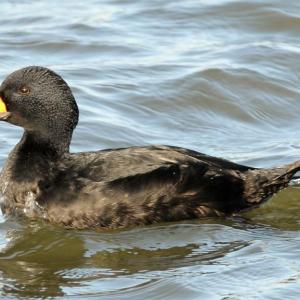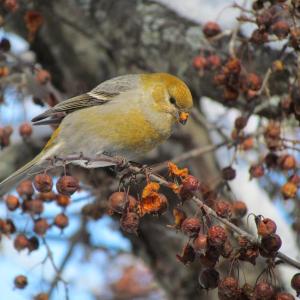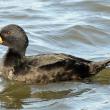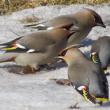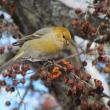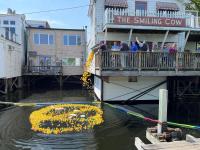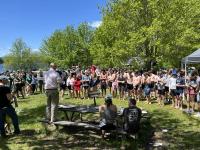Ten Million Birds?
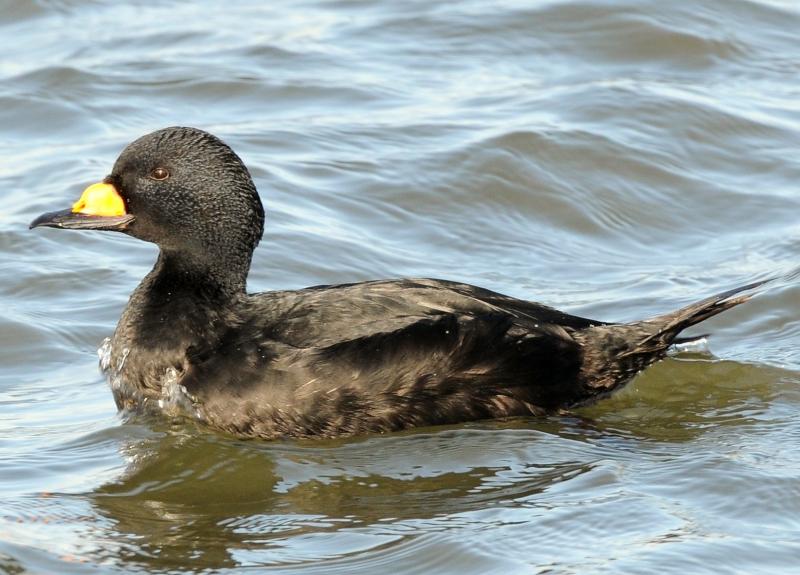 Black scoters that regularly pass through or spend the winter along the Maine coast may have nested in the 12-million-acre Seal River Watershed of northern Manitoba. Photo by Peter Massas, courtesy of Wikimedia Commons
Black scoters that regularly pass through or spend the winter along the Maine coast may have nested in the 12-million-acre Seal River Watershed of northern Manitoba. Photo by Peter Massas, courtesy of Wikimedia Commons
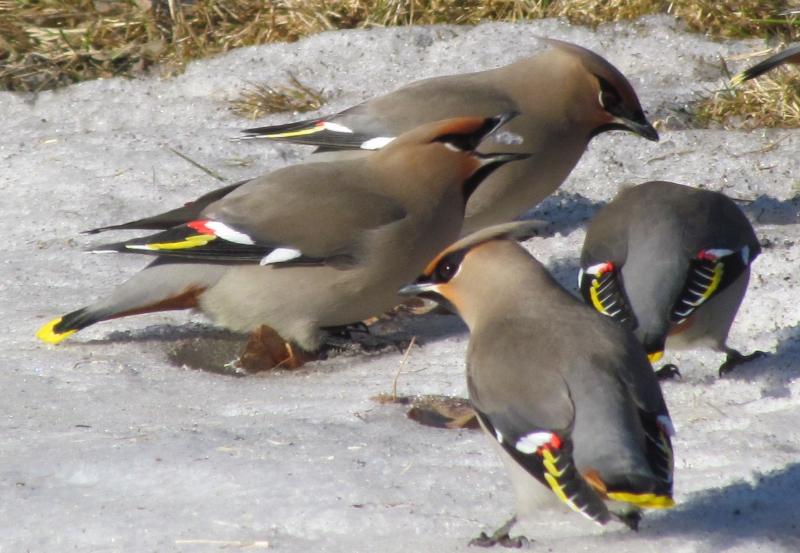 Bohemian waxwings are famous for their wandering ways - in some winters, they can reach Maine in larged numbers. They nest across the Seal RIver Watershed of northern Manitoba. Courtesy of Jeff Wells
Bohemian waxwings are famous for their wandering ways - in some winters, they can reach Maine in larged numbers. They nest across the Seal RIver Watershed of northern Manitoba. Courtesy of Jeff Wells
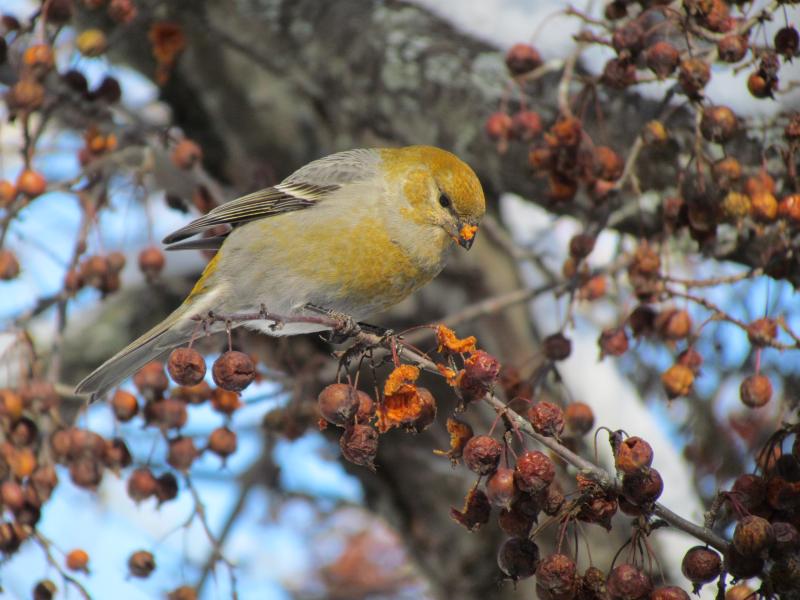 Pine grosbeaks are a treat for birders in Maine to see in some winters - many birders can go years between sightings. This is another species for which the Seal RIver Watershed is an important breeding landscape. Courtesy of Jeff Wells
Pine grosbeaks are a treat for birders in Maine to see in some winters - many birders can go years between sightings. This is another species for which the Seal RIver Watershed is an important breeding landscape. Courtesy of Jeff Wells
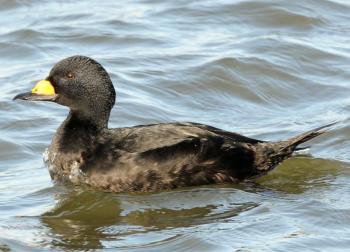 Black scoters that regularly pass through or spend the winter along the Maine coast may have nested in the 12-million-acre Seal River Watershed of northern Manitoba. Photo by Peter Massas, courtesy of Wikimedia Commons
Black scoters that regularly pass through or spend the winter along the Maine coast may have nested in the 12-million-acre Seal River Watershed of northern Manitoba. Photo by Peter Massas, courtesy of Wikimedia Commons
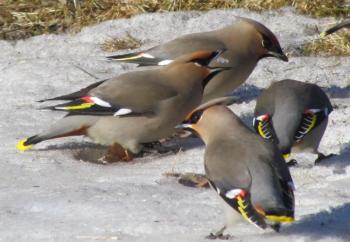 Bohemian waxwings are famous for their wandering ways - in some winters, they can reach Maine in larged numbers. They nest across the Seal RIver Watershed of northern Manitoba. Courtesy of Jeff Wells
Bohemian waxwings are famous for their wandering ways - in some winters, they can reach Maine in larged numbers. They nest across the Seal RIver Watershed of northern Manitoba. Courtesy of Jeff Wells
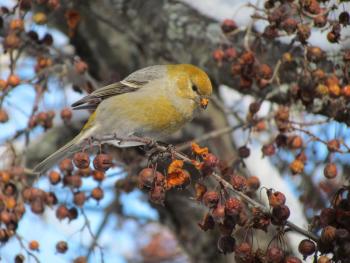 Pine grosbeaks are a treat for birders in Maine to see in some winters - many birders can go years between sightings. This is another species for which the Seal RIver Watershed is an important breeding landscape. Courtesy of Jeff Wells
Pine grosbeaks are a treat for birders in Maine to see in some winters - many birders can go years between sightings. This is another species for which the Seal RIver Watershed is an important breeding landscape. Courtesy of Jeff Wells
A watershed in the Canadian province of Manitoba almost half the size of the entire state of Maine and estimated to support more than ten million breeding birds took a significant step closer to full protected status last week. At a public ceremony, the First Nations leaders of the Seal River Watershed Alliance, Manitoba Premier Wab Kinew, and Canadian Environment Minister Steven Guilbeault announced interim protection for the 12-million-acre Seal River Watershed while a feasibility study is completed.
Just to give some context, this is a watershed three and half times larger than the entire Kennebec River watershed. Consider a distance from headwater to mouth longer than that from Kittery to Houlton. It’s a big landscape.
Indigenous leaders from the four First Nations whose traditional territories overlap the watershed have been advocating for its protection for years.
Why should you care?
There are many reasons, of course, including that any initiative that could protect from loss and degradation the natural forests, peatlands, wetlands, lakes, streams, rivers, and coastline of such a massive area is a no-brainer for human existence on planet earth. That should be enough. But if you require a more direct connection for this to seem relevant to you, consider that among those ten million or more birds estimated to nest in the Seal River Watershed are many that migrate through or winter right here in Maine. That’s why readers of this column may remember that we’ve mentioned this special place more than once over the years.
Take the semipalmated plover or lesser yellowlegs that we’ve written about often in these pages. Both are among the most commonly observed shorebird species seen along Maine’s coast. Both species nest in the Seal River Watershed.
Black scoters, the males jet black with bright orange bill knobs, bob and dive in the icy waters of the Maine coast throughout the winter. Satellite tracking studies show that black scoters that nest in the Seal River Watershed migrate to the New England coast in the fall. Black scoters that you can see here in Maine are reliant on the future of the Seal River Watershed for their survival!
And it’s not just waterfowl and shorebird species that we share. Abundant breeding birds of the Seal River Watershed include species like the familiar blackpoll warbler. Their amazing fall migration brings them eastward to the Atlantic Coast to places like Maine, where they leap off for a mind-boggling three-to-five-day non-stop flight before they reach landfall in the Caribbean or South America.
Birds that we Mainers enjoy in winter like common redpolls, pine grosbeaks, and Bohemian waxwings rely on the Seal River Watershed to raise their young.
That’s just a few very specific reasons why all of us should not only care but excitedly applaud this announcement. Thanks to the Seal River Watershed Alliance and the Governments of Manitoba and Canada for this incredible commitment!
Jeffrey V. Wells, Ph.D., is a Fellow of the Cornell Lab of Ornithology and Vice President of Boreal Conservation for National Audubon. Dr. Wells is one of the nation's leading bird experts and conservation biologists. He is a coauthor of the seminal “Birds of Maine” book and author of the “Birder’s Conservation Handbook.” His grandfather, the late John Chase, was a columnist for the Boothbay Register for many years. Allison Childs Wells, formerly of the Cornell Lab of Ornithology, is a senior director at the Natural Resources Council of Maine, a nonprofit membership organization working statewide to protect the nature of Maine. Both are widely published natural history writers and are the authors of the popular books, “Maine’s Favorite Birds” (Tilbury House) and “Birds of Aruba, Bonaire, and Curaçao: A Site and Field Guide,” (Cornell University Press).

